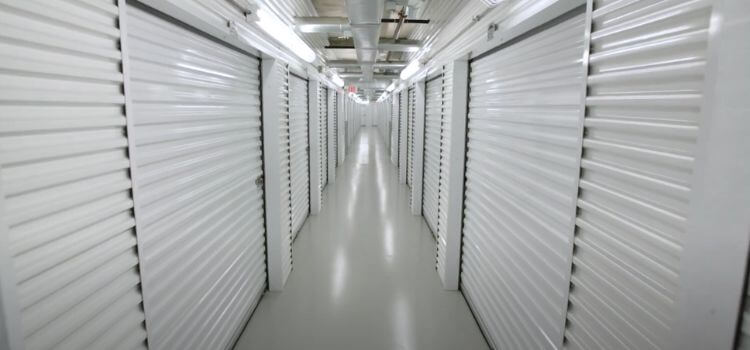Furniture storage can be a great way to keep your furniture safe from damage and the elements while you are away from home for extended periods of time. However, many people are unsure of how long they can keep furniture in storage. In this blog post, we’ll discuss the general guidelines for how long you can keep furniture in storage, as well as how to best prepare your furniture for storage and how to ensure that it remains safe. We’ll also discuss the benefits of storage and why it can be a great option for protecting your furniture.
Consider the Type of Storage You’re Using

Depending on the type of furniture storage you’re using, different restrictions may apply. For instance, if you’re using a professional storage facility, you may need to check with the facility to determine their policy on how long furniture can remain in storage. Generally, these facilities have a limit on how long you can store furniture. However, if you’re using a self-storage facility, you may be able to keep your furniture in storage for extended periods of time, as long as you follow the rules of the facility. It’s also important to check with the facility on the type of furniture they allow to be stored, since some types of furniture may not be allowed.
Additionally, you should pay attention to the temperature and humidity of the storage facility, since extreme temperatures and humidity can cause damage to furniture. Finally, you should consider the size of the storage unit that you’ll need. This may depend on the size of the furniture and the number of pieces that you plan to store.
Understand the Environmental Conditions of the Storage Facility
One of the most important factors to consider when storing furniture is the environmental conditions of the storage facility. This means that you should be aware of the temperature and humidity of the facility, as well as any other environmental factors that may affect the furniture. This is especially important for antique furniture.
Additionally, you should pay attention to the security of the facility, as some furnishings may be vulnerable to theft or damage. Furthermore, you should check with the facility to make sure that your furniture will be properly taken care of. This could include making sure that pest control measures are taken and that the facility is regularly inspected.
Finally, you should also be aware of any regulations and restrictions that the facility may have before storing your furniture. This can help you ensure that your furniture is properly protected while it is in storage. By understanding the environmental conditions of the storage facility, you’ll be able to ensure that your furniture is properly taken care of and protected while in storage.
Check the Manufacturer’s Guidelines for Care and Storage

is a must when it comes to storing your furniture. Before you store your furniture, you should make sure you have all of the proper care and storage instructions from the manufacturer. This will help you to keep the furniture in the best condition possible. It is also important to make sure you understand the environmental conditions of the storage facility. Temperature and humidity is very important when it comes to storing furniture. Furniture can become damaged if it is stored in an environment that is too hot or too cold or has too much humidity.
Additionally, you should make sure that the facility is secure to protect your furniture from theft or damage. It is also important to check with the facility to make sure that proper pest control measures are taken. Finally, you should also be aware of any regulations and restrictions that the facility may have before storing your furniture. By understanding the environmental conditions of the storage facility, you’ll be able to ensure that your furniture is properly taken care of and protected while in storage.
Look at the Material Composition of Your Furniture

Looking at the material composition of your furniture will help to ensure that your furniture remains in the best condition possible for as long as possible. You should also make sure to be aware of the environmental conditions of the storage facility.
Temperature and humidity are both important when it comes to properly storing furniture. Furniture can become damaged if it is stored in an environment that is too hot or too cold or has too much humidity. It is important to check with the storage facility to make sure that proper pest control measures are taken.
Additionally, you should be aware of any regulations or restrictions that the storage facility may have. Understanding the environmental conditions of the storage facility will help you to ensure that your furniture is properly taken care of and protected while in storage.
Consider the Impact of Pests and Insects
It is important to be aware of any potential pests and insects that may be present in the storage facility. These pests and insects can potentially damage your furniture if not prevented. Be sure to check with the storage facility to see if they have any pest-control measures in place to help protect your furniture from these unwanted intruders.
Additionally, make sure to be aware of the environmental conditions of the storage facility and any regulations and restrictions that the facility may have. Temperature and humidity should be considered when storing furniture, as furniture can become damaged if it is stored in an environment that is too hot or too cold, or has too much humidity.
Finally, you should also make sure to look at the material composition of your furniture to ensure that it remains in the best condition possible for as long as possible. By understanding the environmental conditions of the storage facility, you’ll be able to ensure that your furniture is properly taken care of and protected while in storage.
Be Mindful of Moisture in the Storage Facility

Moisture is one of the most damaging elements to furniture. If the storage facility has a high humidity level, you may need to invest in a dehumidifier or other means to keep the moisture levels in the storage facility to a minimum. Additionally, make sure to check the material composition of your furniture. Being aware of these types of materials can help to prevent damage to your furniture in the storage facility. Additionally, you should also be aware of any regulations or restrictions that the storage facility may have. Understanding these will help you to keep your furniture in the best condition possible for as long as possible.
Consider the Impact of Pests and Insects. Pests and insects can also cause damage to your furniture if not prevented. Be sure to check with the storage facility to see if they have any pest control measures in place. These can be something as simple as applying certain chemicals, or using traps to catch any unwanted visitors. Additionally, make sure to keep your furniture sealed in a way that will not attract any pests. Similarly, if there are any other animals in the storage facility, it is important to ensure that they do not have access to your furniture, as they can potentially cause damage to your furniture or other items.
Take into Account the Length of Time Your Furniture Will Be in Storage
When it comes to storing furniture, it is important to consider the length of time that the furniture will be in storage. This is because furniture can be easily damaged over time if not taken care of properly. Different types of furniture have different lifespans, so knowing the lifespan of your furniture can help you decide how long it should stay in storage. Additionally, it is important to factor in the weather and environmental conditions in the storage facility in order to ensure that your furniture is kept in the best condition. Understanding the length of time that your furniture will be in storage is key to keeping it in good condition for as long as possible.
Consider the Impact of Pests and Insects. Another factor that should be taken into account when storing furniture is the potential impact of pests and insects. Pests and insects can cause damage to furniture if they are not kept away. Therefore, it is important to check with the storage facility to see if they have any pest control measures in place, such as applying certain chemicals or using traps to catch any unwanted visitors. Additionally, keep your furniture sealed in a way that will not attract any pests or insects. It is also important to ensure that any animals in the storage facility do not have access to your furniture, as they can potentially cause damage.
Conclusion
it’s important to remember that furniture in storage should be monitored periodically to ensure that it is not being damaged. If you’re using a storage facility, make sure to check on your furniture regularly to make sure it’s in good condition. If you’re storing furniture in your home, make sure to keep it in an area that is not too humid and not too dry. Also, make sure to keep your furniture out of direct sunlight to prevent fading or warping. With proper care, your furniture can last for years in storage.
Frequently Asked Questions
You can keep furniture in storage for as long as you need, as long as you take proper care of it. Make sure to check the furniture regularly and keep it free from moisture and pests.
If you don’t have enough room to store furniture, you can rent a storage unit or look for a storage facility that offers furniture storage.
The best materials to use when storing furniture are plastic, cardboard, or blankets. These materials can help protect the furniture from moisture and pests.
If your furniture gets damaged in storage, you should contact the storage facility immediately. They should be able to help you assess the damage and provide you with the necessary repairs or replacements.


